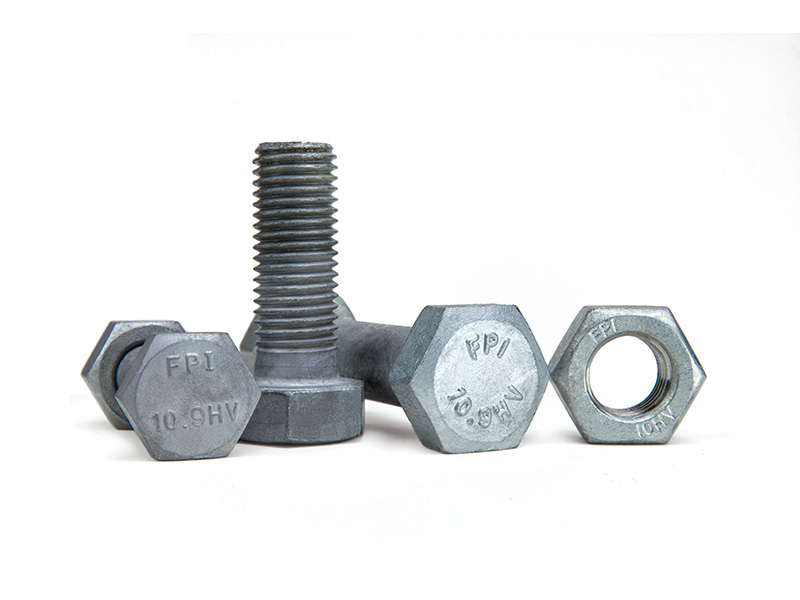
De-Greasing Process
A hot alkaline solution is used to removes dirt, oil, grease, shop oil, and soluble markings. The surface is visually inspected for any residue of dust, grease and oil bases.

Pickling Process
Dilute solutions of hydrochloric acid (by ratio 10%hydrochloric acid, balance water to make dilute solution of hydrochloric acid) is used for 5-7 minutes to remove surface rust and scale to provide a chemically clean metallic surface. The surface is visually inspection for any residue of rust.
Fluxing Process
The steel article is immersed in liquid flux (zinc ammonium chloride solution) to remove oxides and to prevent oxidation prior to dipping into the bath of molten zinc. In the dry galvanizing process, the item is separately dipped in liquid flux bath, removed, allowed to dry and then galvanized.In the wet galvanizing process, the flux floats atop the molten zinc and the item passes through the flux immediately prior to galvanizing.
Galvanizing Process
The steel article is immersed in bath of molten zinc between 815-860 °F (450-460 °C). During galvanizing, the zinc metallurgical bonds to the steel, creating a series of highly abrasion-resistant zinc-iron alloy layers, commonly topped by a layer of impact-resistant pure zinc.

Finishing Process
After the steel withdrawn from the galvanizing bath, excess zinc is removed by draining, vibrating or for small items by centrifuging. The galvanizing item is then air-cooled or quenched in liquid. Excess lumpy formation is removed by manual filing or using a hand grinder so to have a smooth finish coating.
Inspection
Coating-thickness and surface-condition inspection is done on the articles that are galvanized. The thickness is measured using ‘Elcometer’ and has to comply with the ASTM A153 Cl ‘C’ standard specification for hot dip galvanizing on components having minimum coating requirement of 43 microns. A set of five reading is taken and the average value so 53 microns is required. The coating should be smooth and should not flake or peel of when scrapped with a knife.



